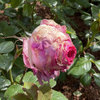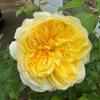New research another Koch's Postulate met for Rose Rosette Virus
Although the rose rosette virus had been identified, the confirmation had not been complete. From the thesis: "Koch postulates could not be fulfilled for the virus as there were no local lesion alternative hosts identified and virus purifications were unsuccessful (Laney, 2010)."
H. Kuska comment: Koch's 4 postulates are the following:
http://en.wikipedia.org/wiki/Koch's_postulates
"1) The microorganism must be found in abundance in all organisms suffering from the disease, but should not be found in healthy organisms."
H.Kuska comment: they met this postulate.
"2) The microorganism must be isolated from a diseased organism and grown in pure culture."
H.Kuska comment: they comment about why they could not meet this postulate.
"3) The cultured microorganism should cause disease when introduced into a healthy organism."
H.Kuska comment: They were not successful with graft transmission tests.
"4) The microorganism must be reisolated from the inoculated, diseased experimental host and identified as being identical to the original specific causative agent."
H.Kuska comment. This one depends on postulate 3.
-------------------------------------
The authors feel that they have now satisfied the third Koch postulate .
Title: "Rose rosette virus is the causal agent of Rose rosette disease"
Authors: P. L. Di Bello (1), I. E. TZANETAKIS (1)
(1) Department of Plant Pathology and Cell and Molecular Biology Program,
University of Arkansas, Fayetteville, AR, U.S.A.
Phytopathology 103(Suppl. 1):S1.3
Abstract: Rose rosette disease (RRD) was discovered in the 1930s causing witchesâÂÂ-broom on roses in North America. In 2011, a new virus, provisionally named Rose rosette virus (RRV) was identified and perfectly correlated with typical RRD symptoms. Previous research has shown that RRD is transmitted by the eriophyid mite Phylocoptes fructiphilius. KochâÂÂs postulates have not been completed for RRD/RRV since no RRV local lesion host has been identified, nor has it been feasible to purify the virus. P. fructiphilius mites were collected from Rosa multiflora affected by RRD. Mites were individually transferred to roses, which previously tested negative for RRV. Two months post inoculation; material tested positive for RRV. Mosaic and mottling patterns developed on the leaves, followed by distorted leaves, and proliferation of shoots; all of which are described as RRD symptoms. This is
the first time P. fructiphilius has been proven to transmit RRV and the subsequent development of typical RRD provides evidence that RRV is the causal agent of RRD."
Here is a link that might be useful: link for abstract






strawchicago z5
Related Discussions
Question about seeds and RRD
Q
rose rosette spread by prunners yes, no ???
Q
Identify virused roses
Q
What is this?
Q